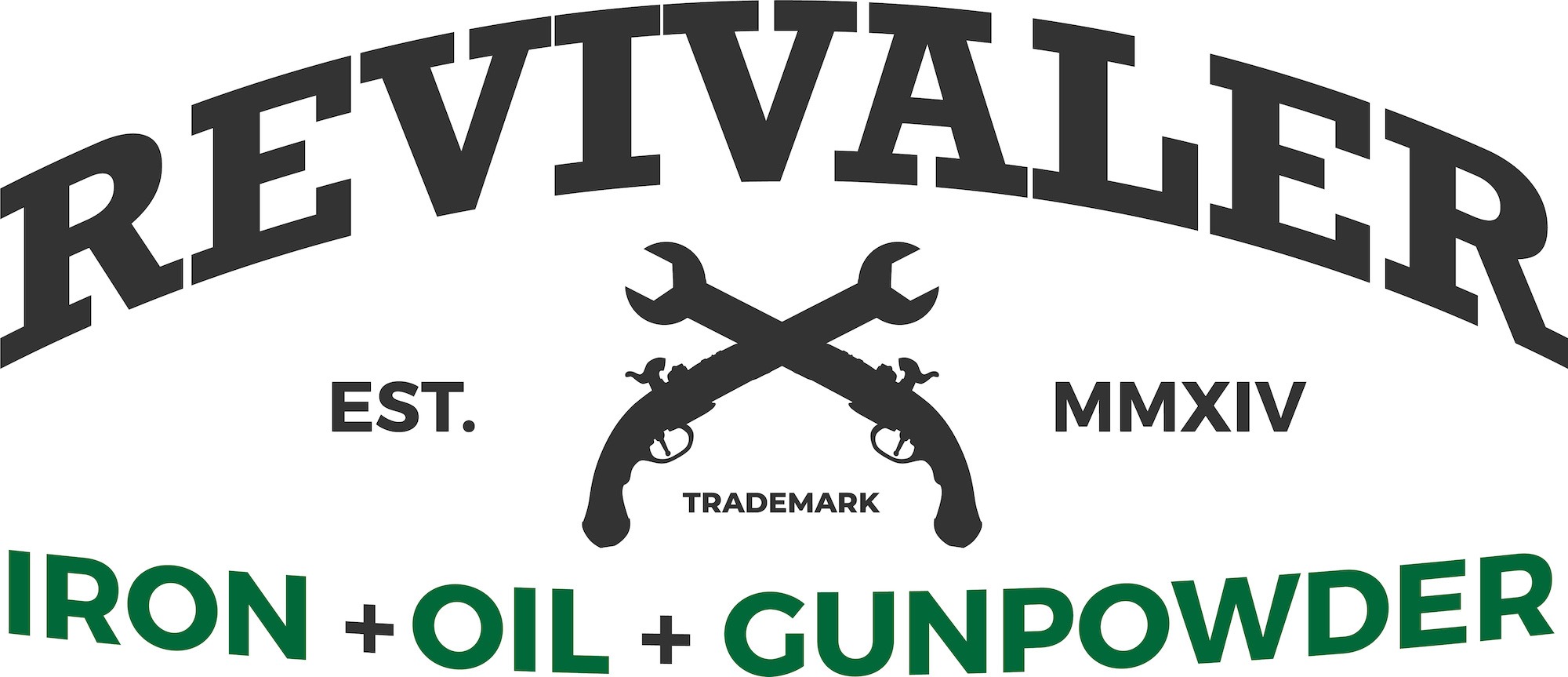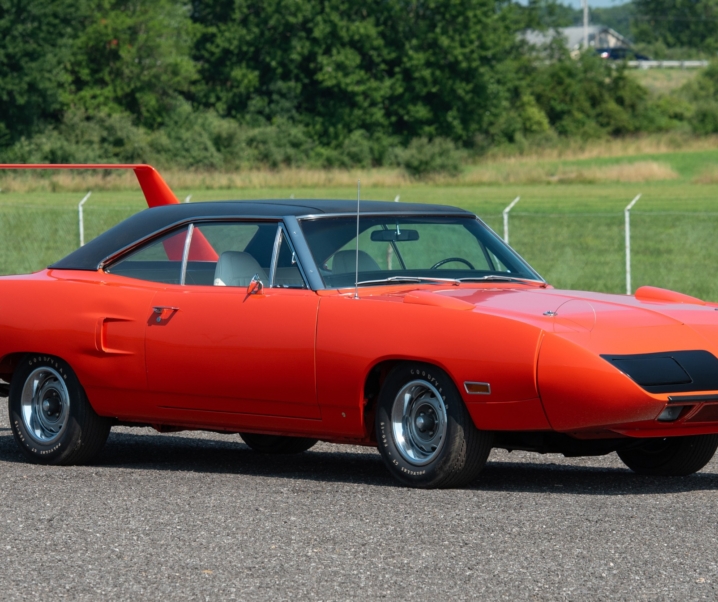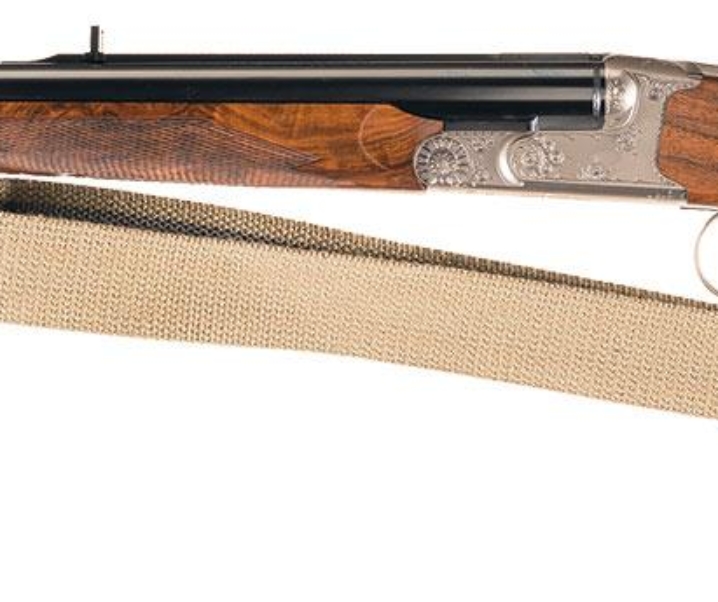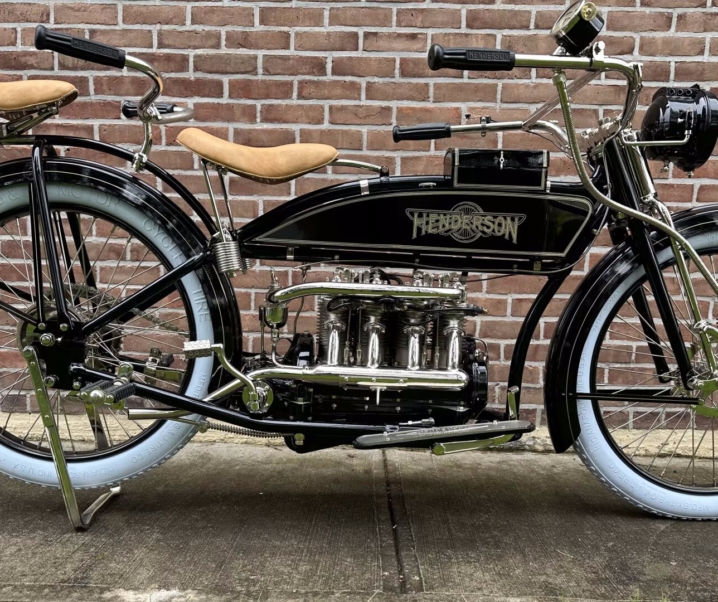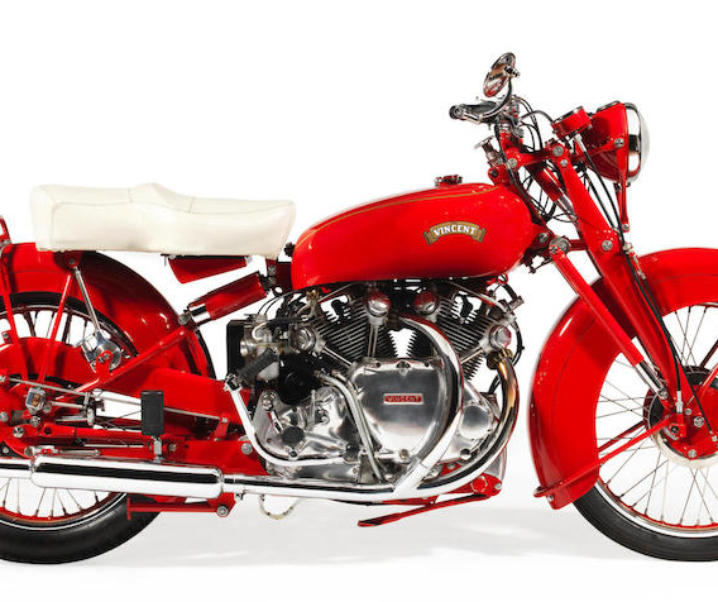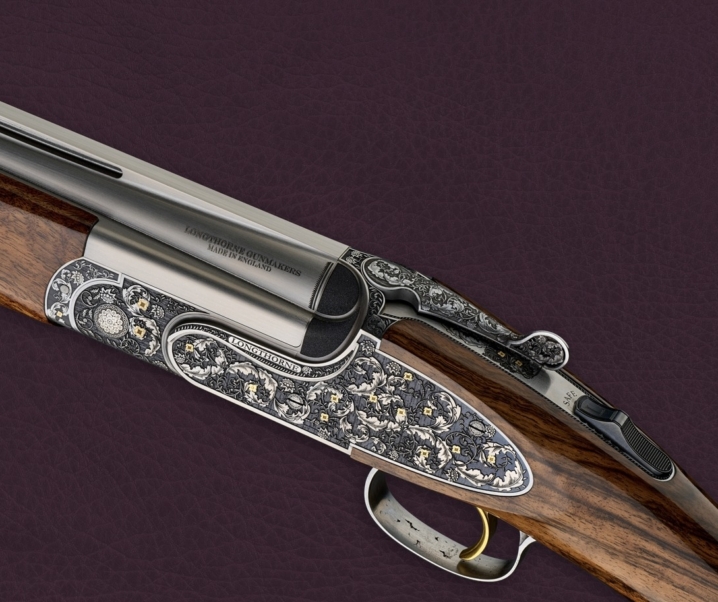Bullard rifles are some of the most interesting and unusual designs among US rifles. The Bullard lever action repeating rifles stand out as arguably the smoothest lever actions of the late nineteenth century.
Fast Facts
- James Herbert Bullard was both a firearms inventor and also a pioneer in automobile design.
- Bullard’s rifle making company was established around 1880 and closed in 1891.
- There were six model Bullard rifles made, two lever action repeating rifles, and four single shot rifles.
- A Bullard large frame lever action repeating rifle chambered for the 45-70 cartridge is up for sale by Rock Island Auction at time of publication.
James Herbert Bullard was a creative and inventive man. His creative influence is best known in the field of firearms development, but he was also a designer of many other things including a steam powered automobile.
Bullard was a friend of gunmaker Daniel B. Wesson and when he invented and patented a machine for checking pistol grips he assigned that patent to Daniel Wesson. Bullard’s pistol stock checkering machine was so excellent that it was in use by Smith & Wesson right up until 1971.
Bullard’s foray into establishing his own rifle making business was begun during the 1880’s while he was working as a superintendent in the Springfield Sewing Machine Company, which was owned by Smith & Wesson.
By 1881 James Bullard was happy enough with the progress of his rifle making business that he left the sewing machine company to work on it full time.
Bullard’s rifle designs were in two categories; lever action repeating rifles, and single-shot rifles.
The lever action repeating rifles were made in small and large action sizes, and while they look similar to the lever actions made by Winchester and Marlin their workings were completely different.
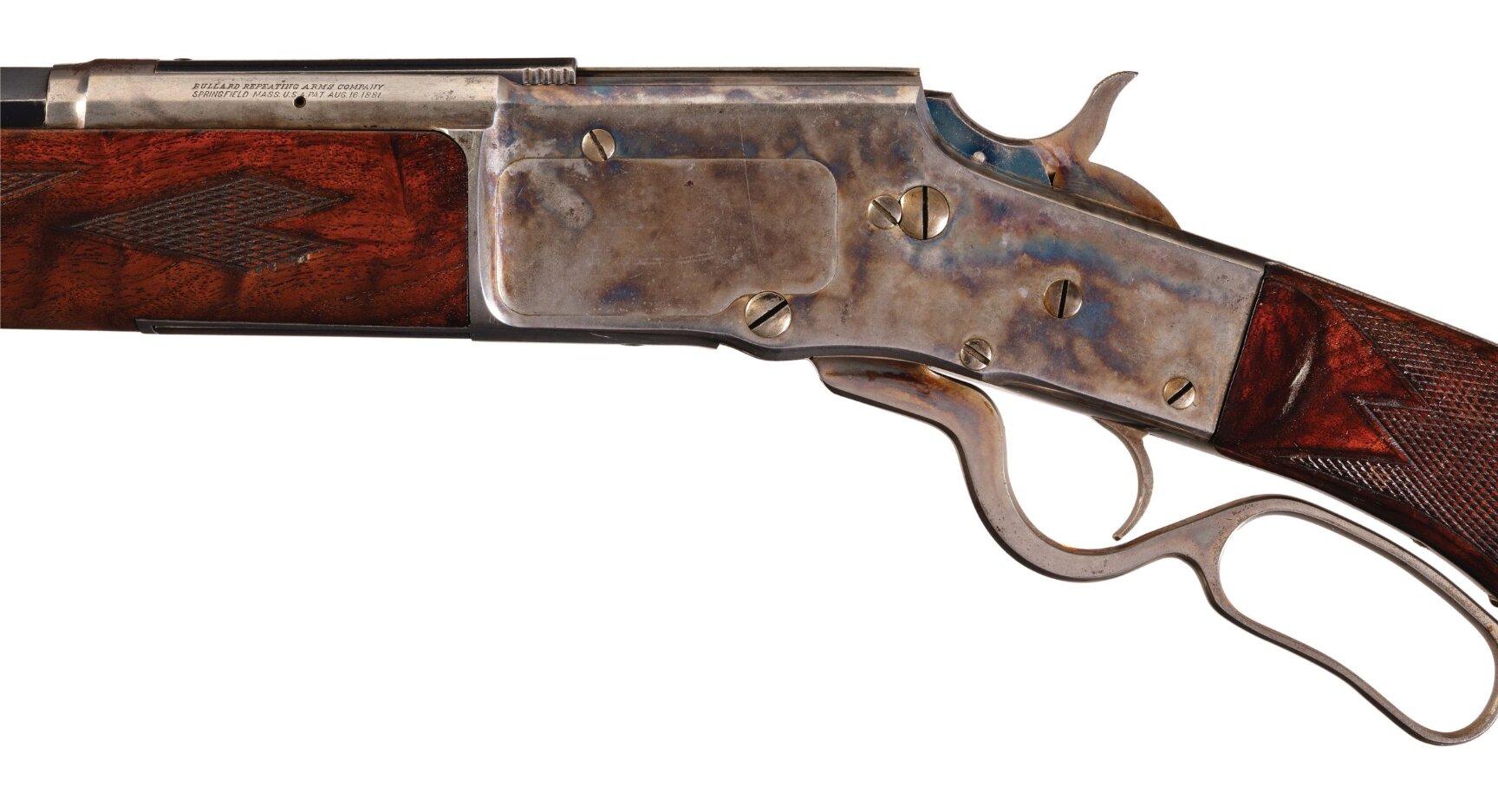
Both the large action and the small action worked in the same way, with the small action simply being made shorter to accommodate revolver cartridges. The large action was made in two lengths. one that was able to handle cartridges up to 2½ inches long, which was long enough to accommodate the 45-70 and all of the proprietary Bullard cartridges from 40 caliber up to 50 caliber. The other large action version was made slightly shorter to accommodate cartridges up to 2¼ inches long such as the 50-95 Winchester Express, 45-75 Winchester, and the 45-60 Winchester.
The small action Bullard was made to accommodate 32 and 38 caliber cartridges and the 44-40.
Bullard knew he was going up against stiff opposition as both Winchester and Marlin were well established as makers of lever action repeating rifles, so he knew he needed to offer a rifle that was superior to the rifles of his competitors.
Bullard set about designing a rifle with the smoothest action possible, and one with the strongest action. To accomplish this he used a rack and pinion gear for the sliding bolt. The rack was machined into the bolt while the pinion was machined into a part linked to the lever of the action.
Bullard then set about an additional system with which to lock the bolt in place for firing. To accomplish this he used a rolling block that rotated down as the lever was lowered, so the bolt was free to move rearwards to eject the spent cartridge case in the chamber.
When the lever was moved up and closed it moved the bolt forward to battery and moved the rolling block up to lock in place behind the bolt, thus creating a strongly closed action that would happily accommodate the most powerful of the US cartridges available at that time.

The section of the action that handled the cartridge loading and chambering was located in the front of the action, which made the Bullard action quite long. The cartridges were loaded via a loading gate at the bottom of the action, and ejected out of the top of the action. The system was very similar to that used on the Winchester Model 1873.
James Bullard undoubtedly succeeded in making what many regard as the smoothest lever action of that time in history, and one of the strongest. It was a repeating rifle that was perfectly comfortable with the bear and buffalo capable 50-95, and as the large action rifles tended to weigh around ten pounds, depending on barrel length and magazine capacity, they were quite comfortable to shoot for someone used to rifles of that heft and cartridges of that power.
The Bullard Repeating Arms Company only remained active until 1891, by which time Bullard himself had left the company and involved himself in the design and making of steam automobiles. His circle of friends included not only Daniel B. Wesson but also Buffalo Bill and “Little Miss Sure Shot” Annie Oakley.
Bullard rifles were expensive, being around twice the price of the rifles from Winchester and Marlin. So production numbers were fairly low, and surviving rifles a tad scarce.
One of the Bullard large frame repeating rifles is currently for sale by Rock Island Auction with the sale scheduled for December 5th, 2025.

This rifle is chambered for the 45-70 making it a good choice for someone who would like to be able to enjoy shooting it. It is fitted with a 21 inch octagon barrel which is described as “The bore is frosted with some light pitting and distinct rifling“
Rock Island Auction describe the condition of the sale rifle as follows:-
“Fine, retains 70% plus of the original blue finish and 60% plus of the original case colors with the balance mostly grey patina, a few scattered light dings, and a few patches of light surface freckling. The barrel and magazine tube have been shortened with the mounting slot filled on the bottom of the barrel and a Winchester style magazine tube band installed. The refinished wood is also fine with some scattered minor dings/scratches and well-defined checkering. Mechanically excellent.“
You will find the sale page for this rather unusual and fascinating rifle if you click here.
There is an excellent video that features a large frame Bullard rifle on The Cinnabar YouTube channel which you’ll find if you click here.
Picture credits: All pictures courtesy Rock Island Auction unless otherwise noted.
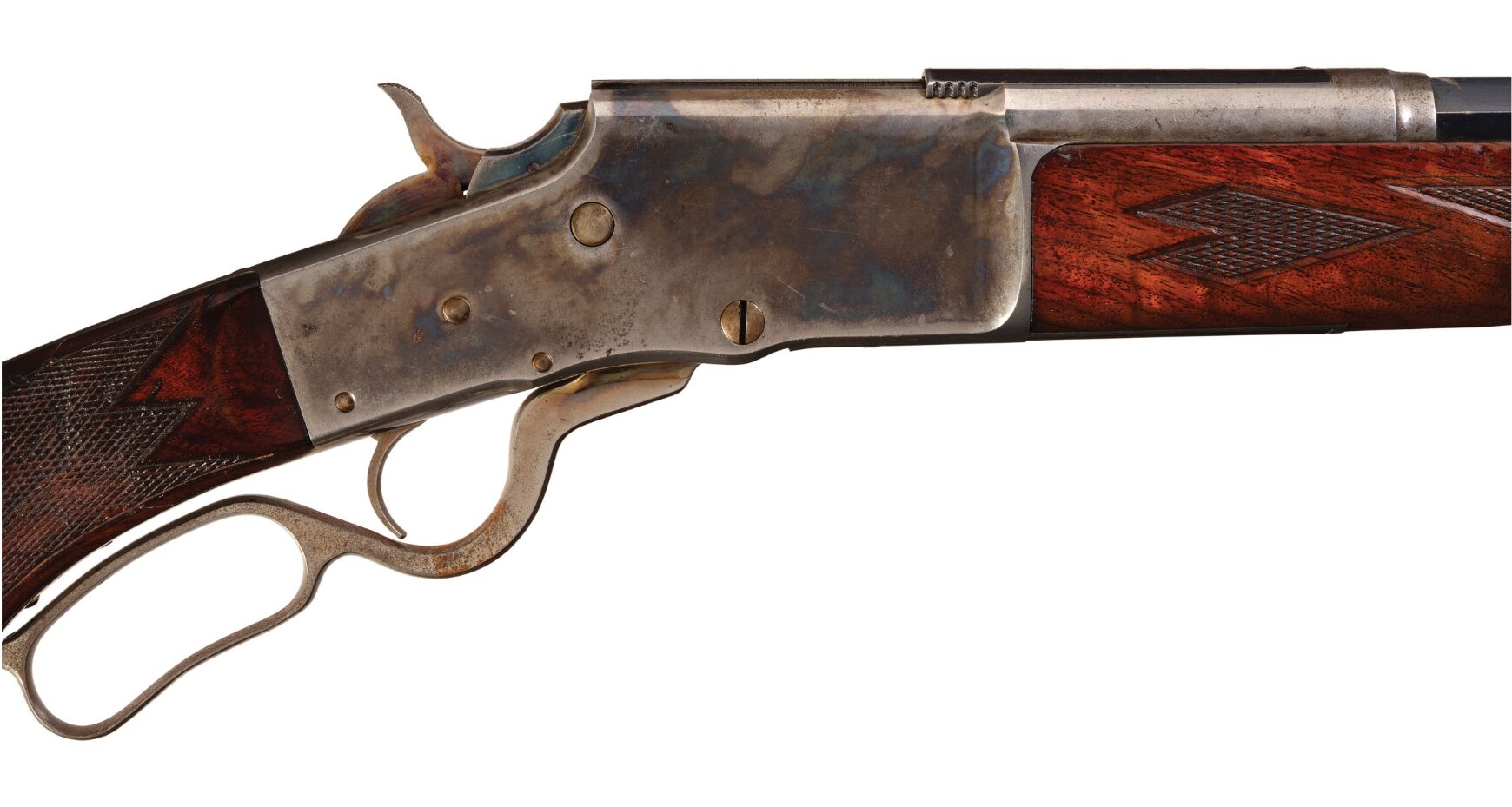
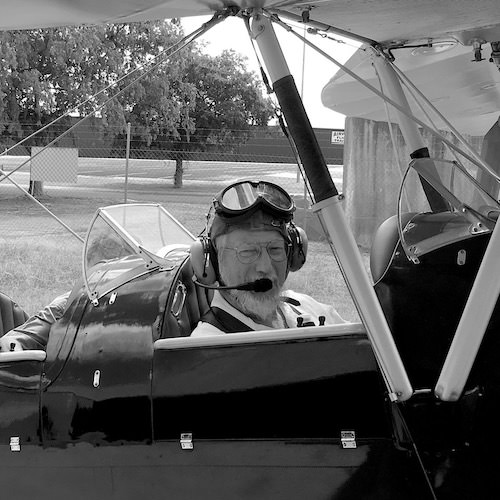
Jon Branch is the founder and senior editor of Revivaler and has written a significant number of articles for various publications including official Buying Guides for eBay, classic car articles for Hagerty, magazine articles for both the Australian Shooters Journal and the Australian Shooter, and he’s a long time contributor to Silodrome.
Jon has done radio, television, magazine and newspaper interviews on various issues, and has traveled extensively, having lived in Britain, Australia, China and Hong Kong. His travels have taken him to Indonesia, Israel, Italy, Japan and a number of other countries. He has studied the Japanese sword arts and has a long history of involvement in the shooting sports, which has included authoring submissions to government on various firearms related issues and assisting in the design and establishment of shooting ranges.
